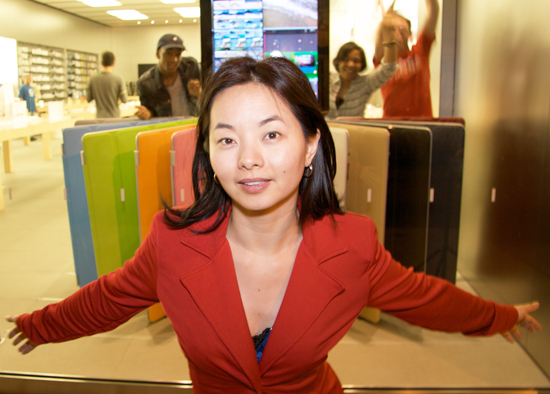Microsoft’s Surface tablets should have been ‘Nexus’ devices
Microsoft execs have made no secret of their frustration over the years with its hardware OEMs. Every time a Windows PC lost out to a Mac in an ad campaign or review, they cringed and cursed their reliance on hardware partners to showcase what they believed was possible with Windows. Getting left in the dust in the red-hot tablet segment by the iPad seems to have been the last straw for Ballmer and crew when it came to relying on others to showcase Windows. Envious of Apple’s ability to control its ecosystem, and anxious to show off the touch and power-friendly capabilities of Windows 8, Microsoft launched its own line of tablets — the Surface RT and Surface Pro.
It is hard to blame Microsoft for wanting to show off its new OS in the best light, and easy to sympathize with it for not getting the mind share it wanted from Android-centric OEM tablet partners when it pitched Windows 8 as an alternative. However, instead of giving Microsoft bragging rights, the Surface tablets have given it a black eye in the marketplace by becoming a business disaster.

Microsoft promoted Surface with splashy direct-to-consumer ads like this electronic billboard over Times Square
In addition to whatever amount Microsoft spent on developing and creating the Surface models, it has already written down $900 million in Surface RT inventory — more than the $853 million in revenue it has earned on its entire Surface product line so far. Just this morning, Microsoft cut the price of Surface Pro, too, by $100. Those abysmal results come after nearly $1 billion in ad spending onWindows 8 and Surface. While some road warriors love their Surface tablets as a practical way to get Office on the go, many who use the tablets have been stymied by the odd mix of Desktop and Metro UI — feeling they spent a lot of money for an unfinished product.
Ballmer told Build conference attendees that Windows 8.1 will address most of Windows 8′s foibles, but the RT Preview version does little to convince anyone. For the full x86 version, found on the Surface Pro, the prognosis is better, but it is no panacea. For the sake of all Windows users I hope he is right, but nothing in Windows 8.1 seems to fix the major issue of working with two different interfaces on a single device.
The worst part is that this disaster could have been avoided if Microsoft had simply taken an honest stock of its strengths and weaknesses and not tried to pretend it could suddenly become Apple. If the Surface tablets had been pitched the way Google promotes its Nexus devices — as a pure experience for purist users, a way to drink the Kool-Aid before it’s watered down — then Microsoft would’ve developed a small, vocal fan base that in time could be used to help promote future versions.
Instead, Microsoft went full bore into iPad-killing mode, with incredibly glitzy TV commercials aimed at mainstream users. No doubt the Type Cover keyboard is one of the coolest accessories I’ve used in a long time, but it isn’t going to make someone happy they spent $1000 on a heavy tablet unless it delivered the goods across the board.
Unfortunately, as the market has demonstrated, neither Surface product has mass market appeal — at least not yet. The Pro has limited battery life, is heavy, and at $1000 is caught competing with Microsoft’s own ultrabook OEM partners. Plus, users have to struggle with dual interfaces to take advantage of the full Windows version on the device. The RT has the opposite problem — a dearth of quality Windows 8 Metro applications — making it great for anyone who lives in Office — at least now that Microsoft is upgrading the bundled email client — but an unlikely choice for anyone else.
Microsoft wasn’t shy at the Surface announcement about sticking its finger in the eye of its partners by crowing that it would make some of the best Windows hardware out there. In many ways it did, as the Surface Pro is a very impressive machine. However, all it accomplished was further antagonizing those same partners, tipping its hand that it isn’t all that loyal to them after all, and getting crushed in its first attempt to go head to head with Apple in the hardware space.
Now the Surface brand is badly damaged, and the expected new models will be greeted with heavy skepticism by both developers and consumers. For example, this year’s RT is likely to have a much faster processor, but Microsoft will have to convince buyers burned by the sluggish performance of the first version to give it a second chance. Microsoft, its partners, and its customers would have been better served if Microsoft had taken a low-key approach with Surface, pitching it as a platform for developers and purists. It could have been a role model for its volume OEMs, as well as a proof of concept for future products.



























